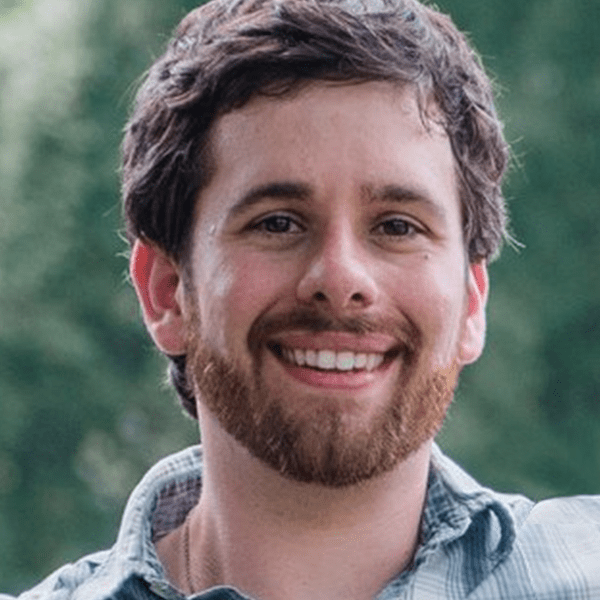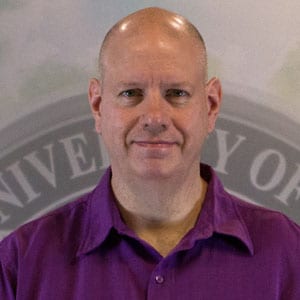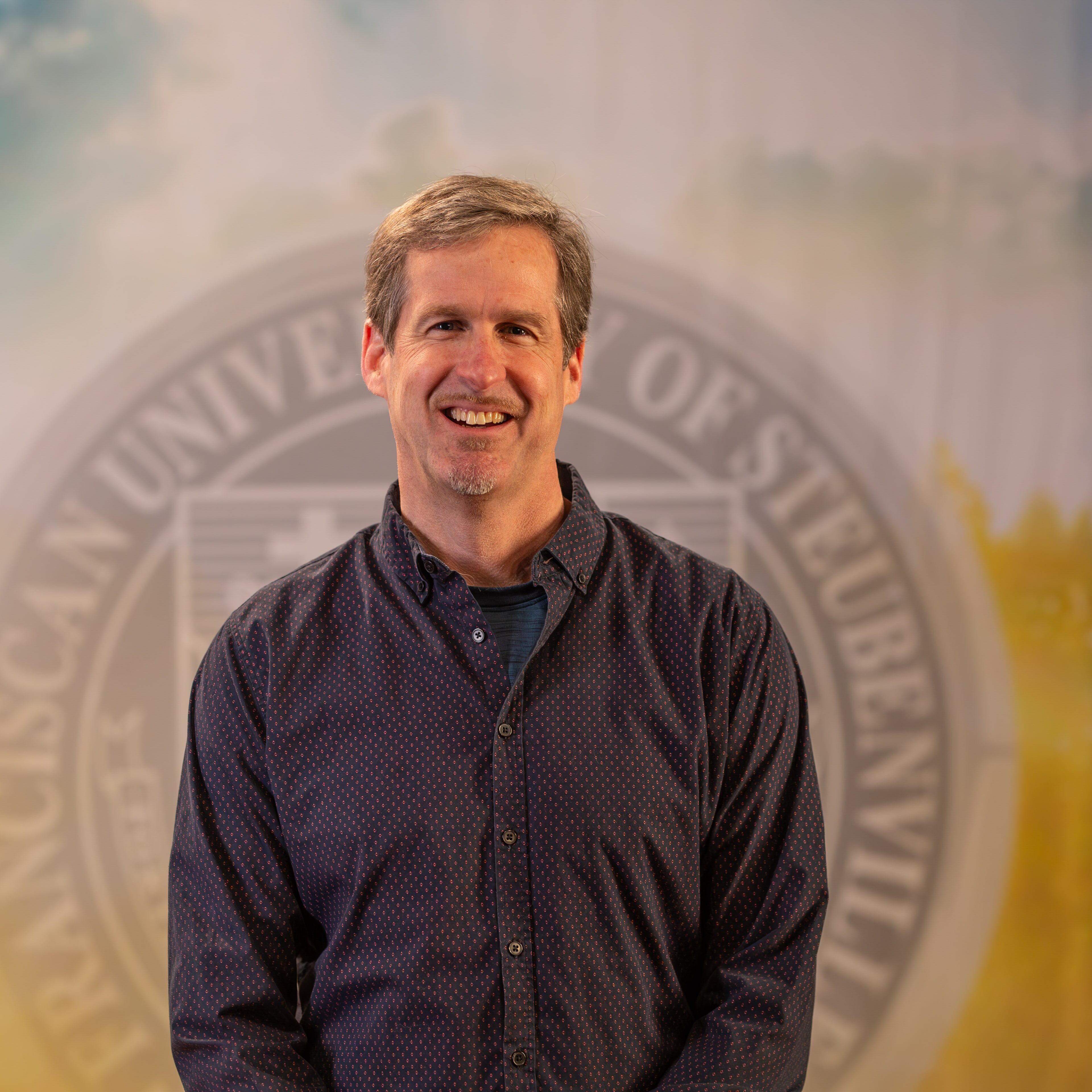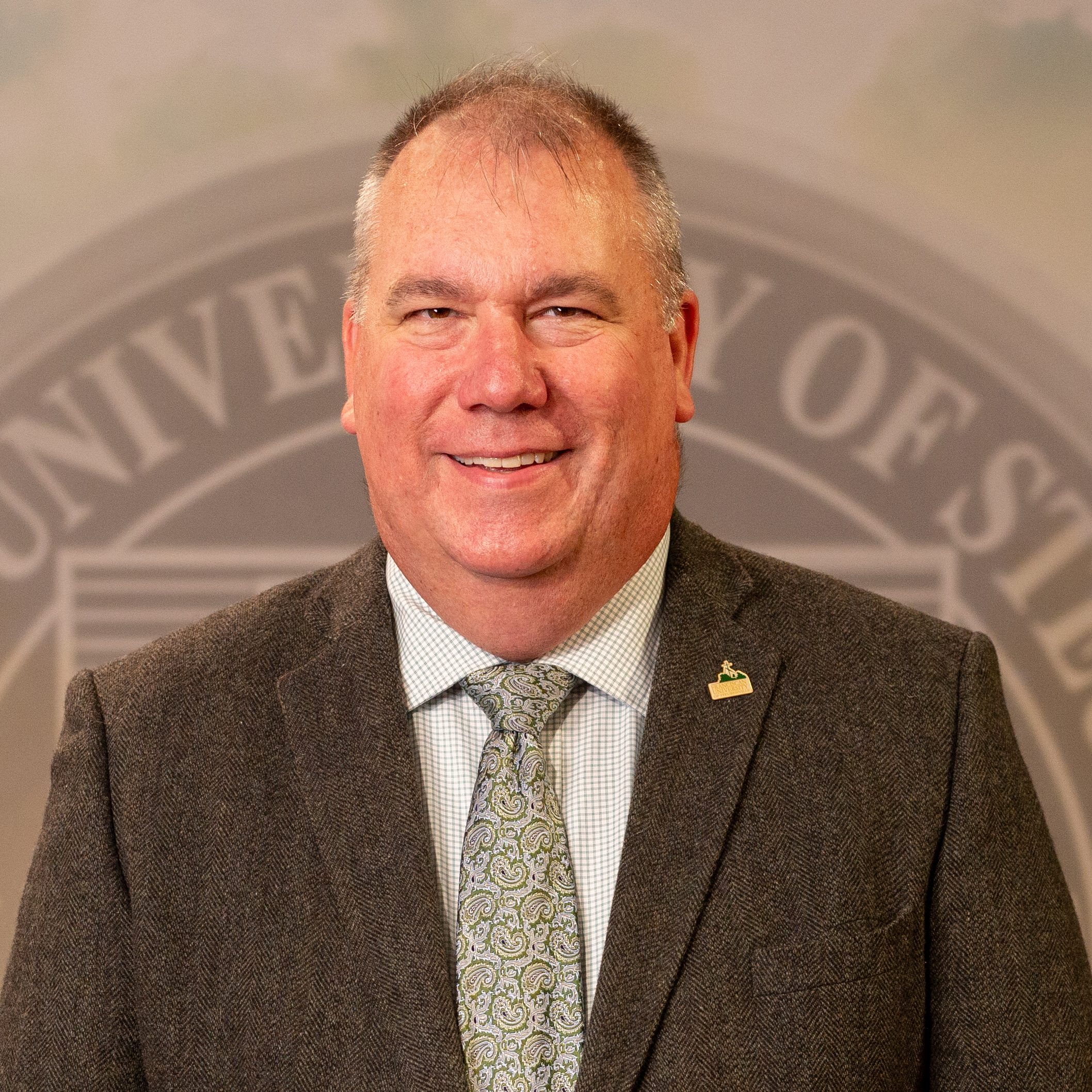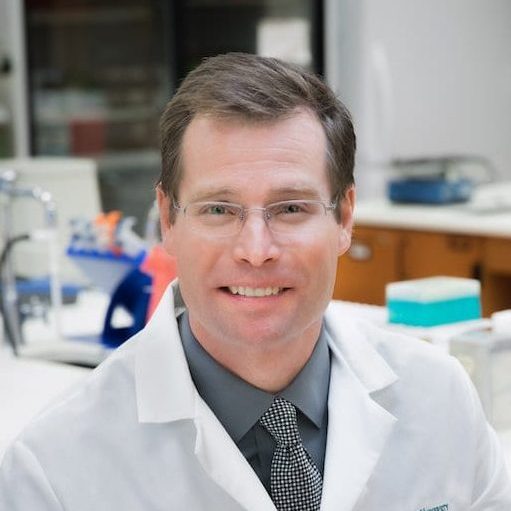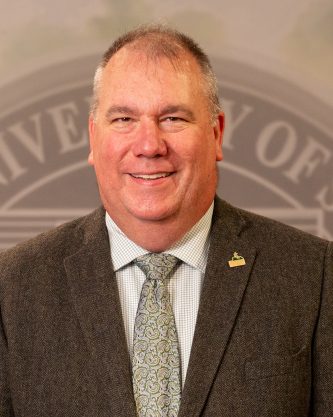
Dr. Eric Haenni
My primary research interests continue to focus on developmental morphology in Vertebrates, with specific emphasis on embryological development of the skull from early organogenesis through parturition. I would like to continue investigating the role of neural crest cells in these more “primitive” vertebrates, utilizing histology (light and electron microscopy) and expand this into the use of novel molecular tracers in contrast microscopy and MRI as tools to further elucidate the physical and biochemical mechanisms that have discrete causative roles within the embryological process.
My recent investment in applying my marine and freshwater coastal ecosystem background in the private sector has stirred an interest in estuarine research, as it relates to nursery areas for sharks and other elasmobranchs. While my interest stems from my long term focus on chondrichthyan fishes, my upbringing in the Midwest has also instilled an interest and love of the lakes and rivers that wind through our communities. By focusing on the long term acquisition of steady streams of data, I believe that we can develop stronger hypothetical frameworks to explore and explain the decline, or improvement, in the health of our water bodies and the intimately dependent inhabitants that are directly affected by the subtle changes in these variables. By acquiring this information and examining the developmental or anatomical embryological changes that accompany these changes in the vertebrate inhabitants of these systems, we may be able to develop theoretical connections that will drive further research and support grant applications for additional funds to expand initial surveys. One such research subject is the Eastern Hellbender, Cryptobranchus alleganiensis. My collaborative work with Ohio DNR and the Jefferson Soil and Water Conservation District has defined the environmental parameters of the Cross Creek watershed and pioneered alternative habitat units to facilitate restoration of the historic population in Jefferson and Harrison Counties.
I also work with chemistry faculty to maintain multiple air quality sampling sites along the Ohio River. This Ohio EPA grant allows Franciscan faculty and students to participate in real-time data acquisition on air quality data that will allow us to develop a better understanding of the current environmental conditions in the Ohio Valley. Students involved in this project gain industry-level experience that is translatable to jobs in the environmental consulting field, along with petroleum exploration and acquisition.
My research goals are not mutually exclusive of my role as a mentor to the undergraduates that share a common interest or are open to acquiring the skills and potential academic credentials that will strengthen their ability to compete for top level assistantships and professional schools. In fact, any research program that I am involved with must have an undergraduate component in order to acquire sufficient funding and further enhance the offerings of the department. By focusing on the students within our program we are cultivating relationships that will lead to professional collaborations in the future. Furthermore, by keeping current with the literature and adding to the body of knowledge, I am able to directly impact the courses that I am teaching with the latest information. By doing so, I am able to add a relevancy to both lecture and laboratory that will further enhance the student’s ability to understand the material.
- B.A. Hendrix College, Biology, June, 1991
- Cornell University, Shoals Marine Laboratory, Summer, 1990 and 1991
- Ph.D. Clemson University, Zoology, August, 2001
- (Dissertation: On the Growth, Functional Morphology, and Embryological Development of the Cephalofoil in the Bonnethead Shark, Sphyrna tiburo.)
Professional
- August 2022 – present. Professor, Biology Department, Franciscan University of Steubenville.
- August 2011- August 2022. Associate Professor, Biology Department, Franciscan University of Steubenville, Dr. John Perozich, Chair. Tenured faculty position involved in teaching Introduction to Environmental Science (BIOL 120) for non-science majors, General Biology 1 (BIOL 142), Human Anatomy and Physiology (BIOL 133/134, 133/134 L) lecture and labs for nursing and allied health majors, Comparative Vertebrate Anatomy (BIOL 230) with an accompanying bi-weekly laboratory, Field Biology lecture and field labs (BIOL 235), Ecology (BIOL 236), Tropical Marine Biology (BIOL 237), Human Anatomy (BIOL 330) with an accompanying bi-weekly laboratory, and Science Practicum for Education Majors (SCI 201). Also coordinate Biology Senior Seminar Spring Series (BIOL 435) as the capstone experience for majors and participate in academic advising of biology majors and other various departmental duties involved as well.
- August 2009 to May 2011. Adjunct Faculty, Indian River State College, Professor Sherry Bowen, Chair. Adjunct faculty position teaching General Biology lecture and laboratories for evening classes. Lecture responsibilities include delivery of two and a half hour recitation and examination preparation, delivery, and evaluation. Lab responsibilities include introductory lectures, practical exam preparation, and mentoring.
- May 2004 to July 2011. Senior Scientist, Crossroads Environmental Consultants, Inc. Tobin R. Overdorf, President. Senior Environmental Scientist responsible for project management, staff supervision, environmental permitting at the local, State, and Federal level, Phase 1 Environmental Site Assessment, Wildlife surveys, Habitat Assessment, Habitat Management Plans, Wetland Delineation, Habitat Restoration, and Field Research. Further responsible for staff and client training in Florida Department of Environmental Protection Qualified Stormwater Management Inspector Certification.
- August 2002- July 2004. Assistant Professor, Biology Department, University of Saint Francis, Dr. Gary Tieben, Chair. Tenure-track faculty position involved in teaching General Biology labs (BIOL 121,122) for non-science majors, Human Anatomy and Physiology (BIOL 221/222, 261 L) lecture and labs for nursing and allied health majors, Vertebrate Physiology (BIOL 349) with an accompanying weekly laboratory, and Developmental Biology (BIOL 344) with an accompanying weekly laboratory. Academic advising of biology majors and other various departmental duties involved as well.
- August 2001 to May 2002. Visiting Assistant Professor, Biology Department, Hendrix College, Dr. Joyce Hardin, Area Chair. Non-tenured faculty position involved in teaching Concepts in Biology (NSCI 100) for non-science majors, Cell Biology (BIOL 100), Comparative Vertebrate Anatomy (BIOL 350) with an accompanying biweekly laboratory, and Developmental Biology(BIOL 310) with an accompanying weekly laboratory.
- August 2000 to May 2001. Visiting Lecturer, Biology Instruction and Ag. Education, Clemson University, Dr. Bill Surver, Chair. Laboratory Instructor and Program Development (BIO 101, 103).
- May 2000 to June 2001. Adjunct Faculty, Tri County Technical College, Mr. Frank Breazeale, Science Dept. Head. Laboratory Instructor, Anatomy and Physiology (210,211).
- November 1999 to December 2000. Exhibit Consultant, The Magic House: St. Louis Children’s Museum, Elizabeth Fitzgerald, Executive Director. Scientific consultant for exhibit on marine ecosystems.
- July 1999 to August 2000. Graduate Teaching Assistant, Dept. of Biol. Sciences, Clemson University. Laboratory instructor/coordinator, Anatomy and Physiology (Biosc 222,223).
- January 1998 to June 1999. Graduate Research Assistant, Dept. of Biol. Sciences, Clemson Univ., Dr. J.P. Wourms. Assist and coordinate ongoing studies in the evolution and development of piscine viviparity.
- February 1997 to June 1997. Visiting Scientist, Mote Marine Laboratory, Center for Shark Research, Dr. Charlie Manire. Collaboration on research project dealing with the embryological development of the cephalofoil in the bonnethead shark.
- March 1996. Guest Lecturer, School for Field Studies, South Caicos Island, British West Indies. Conducted faunal survey of shark population, evaluated logistical feasibility of long-term study, and delivered lectures on conservation and population management of shark populations in the Caribbean.
- August 1994 -December 1997. Graduate Teaching Assistant, Department of Biological Sciences, Clemson University. Laboratory instructor/coordinator, Systems Physiology (Biosc 460/660), Comparative Physiology(Biosc 476/676), Developmental Biology(Biosc 450/650), Comparative Vertebrate Morphology(Biosc 453/653).
- January 1992 -June 1994. Science Intern and Science Instructor, Newfound Harbor Marine Institute, Seacamp Association, John Booker. Intern and Instructor positions responsible for teaching school groups, ranging from 4th grade to college level, tropical marine biology in the Florida Keys National Marine Sanctuary (August-May). Both positions were also responsible for coordinating visits, program development, skin diving instruction, operation of program water craft under Coast Guard ORV status waiver and staff training duties. During the Summer (June-August), responsibilities included designing and teaching seven day mini-courses in specific subject areas. SCUBA science courses also developed. As Senior Staff, responsibilities included development and implementation of two, nine week General Biology courses, based on tropical subject matter, for The Desisto School.
- August 1992 -June 1994. Tagging Technician, Newfound Harbor Marine Inst., Seacamp Assoc., Dr. Jeff Carrier. Tagged and monitored nurse sharks in the Coupon Bight Aquatic Preserve, Big Pine Key. Specimens acquired via longline, from shore and boat. Responsibilities included maintenance of captive animals, recording and submission of vital statistics, oral examination for buccal parasites, surgical implantation of tagging dart, and subsequent release.
- July 1991-October 1991. Laboratory Preparator and Secondary Engineer, Shoals Marine Laboratory, Cornell University and University of New Hampshire, Dr. John B. Heiser. Preparator responsible for general maintenance of lab facilities. Engineer responsible for island-wide maintenance, crew duties aboard R/V John M. Kingsbury, and operation of small water craft.
Professional Societies
- American Elasmobranch Society
- Florida Advanced Stormwater Management Instructor
- Hendrix Biological Society
- National Marine Educators Association
- Florida Master Naturalist, Wetlands
- National Association of Underwater Instructors
- National Association of Environmental Professionals
- Editorial Advisory Board 2010- 2018, Environmental Practice, Journal of the NAEP
My primary research interests continue to focus on developmental morphology in Vertebrates, with specific emphasis on embryological development of the skull from early organogenesis through parturition. I would like to continue investigating the role of neural crest cells in these more “primitive” vertebrates, utilizing histology (light and electron microscopy) and expand this into the use of novel molecular tracers in contrast microscopy and MRI as tools to further elucidate the physical and biochemical mechanisms that have discrete causative roles within the embryological process.
My recent investment in applying my marine and freshwater coastal ecosystem background in the private sector has stirred an interest in estuarine research, as it relates to nursery areas for sharks and other elasmobranchs. While my interest stems from my long term focus on chondrichthyan fishes, my upbringing in the Midwest has also instilled an interest and love of the lakes and rivers that wind through our communities. By focusing on the long term acquisition of steady streams of data, I believe that we can develop stronger hypothetical frameworks to explore and explain the decline, or improvement, in the health of our water bodies and the intimately dependent inhabitants that are directly affected by the subtle changes in these variables. By acquiring this information and examining the developmental or anatomical embryological changes that accompany these changes in the vertebrate inhabitants of these systems, we may be able to develop theoretical connections that will drive further research and support grant applications for additional funds to expand initial surveys. One such research subject is the Eastern Hellbender, Cryptobranchus alleganiensis. My collaborative work with Ohio DNR and the Jefferson Soil and Water Conservation District has defined the environmental parameters of the Cross Creek watershed and pioneered alternative habitat units to facilitate restoration of the historic population in Jefferson and Harrison Counties.
I also work with chemistry faculty to maintain multiple air quality sampling sites along the Ohio River. This Ohio EPA grant allows Franciscan faculty and students to participate in real-time data acquisition on air quality data that will allow us to develop a better understanding of the current environmental conditions in the Ohio Valley. Students involved in this project gain industry-level experience that is translatable to jobs in the environmental consulting field, along with petroleum exploration and acquisition.
My research goals are not mutually exclusive of my role as a mentor to the undergraduates that share a common interest or are open to acquiring the skills and potential academic credentials that will strengthen their ability to compete for top level assistantships and professional schools. In fact, any research program that I am involved with must have an undergraduate component in order to acquire sufficient funding and further enhance the offerings of the department. By focusing on the students within our program we are cultivating relationships that will lead to professional collaborations in the future. Furthermore, by keeping current with the literature and adding to the body of knowledge, I am able to directly impact the courses that I am teaching with the latest information. By doing so, I am able to add a relevancy to both lecture and laboratory that will further enhance the student’s ability to understand the material.
- WITH B. SEGOOL- AN ECOLOGICAL ANALYSIS OF THE INTERTIDAL ZONE OF APPLEDORE ISLAND IN THE ISLES OF SHOALS, GULF OF MAINE
An ecological analysis of the intertidal zone of Appledore Island in the Isles of Shoals, Gulf of Maine. Abstract. Presented at the 75th Annual Meeting of the Arkansas Academy of Sciences, University of Arkansas, April, 1991. - WITH J.P. WOURMS- COMPARATIVE MORPHOLOGY OF THE APPENDICULAE, UMBILICAL STALKS AND PLACENTAE OF SPHYRNID SHARKS: FUNCTIONAL CORRELATES
Comparative morphology of the appendiculae, umbilical stalks and placentae of Sphyrnid sharks: Functional correlates. Abstract. Presented at the 13th Annual Meeting of the American Elasmobranch Society, University of Washington, July, 1997. - WITH J.P. WOURMS, C.A. MANIRE, AND R.E. HUETER- DEVELOPMENTAL BASIS FOR THE EVOLUTION OF THE CEPHALOFOIL IN THE BONNETHEAD SHARKS
Developmental basis for the evolution of the cephalofoil in the bonnethead sharks. Abstract. Poster Presented at the 2000 Annual Meeting of the Society of Integrative and Comparative Biology. Atlanta, GA, January, 2000. Amer. Zool. 39:5, 77A.
Full List
- WITH J.P. WOURMS, C.A. MANIRE, AND R.E. HUETER- EMBRYOLOGICAL DEVELOPMENT OF THE CEPHALOFOIL IN THE BONNETHEAD SHARK, SPHYRNA TIBURO
Embryological development of the cephalofoil in the bonnethead shark, Sphyrna tiburo. Abstract. Presented at the 15th Annual Meeting of the American Elasmobranch Society, Pennsylvania State University, July, 1999. - BOOK REVIEW OF WETLANDS DESKBOOK
Book Review of Wetlands Deskbook. Environmental Practice. 13:1, 76. 2011.




